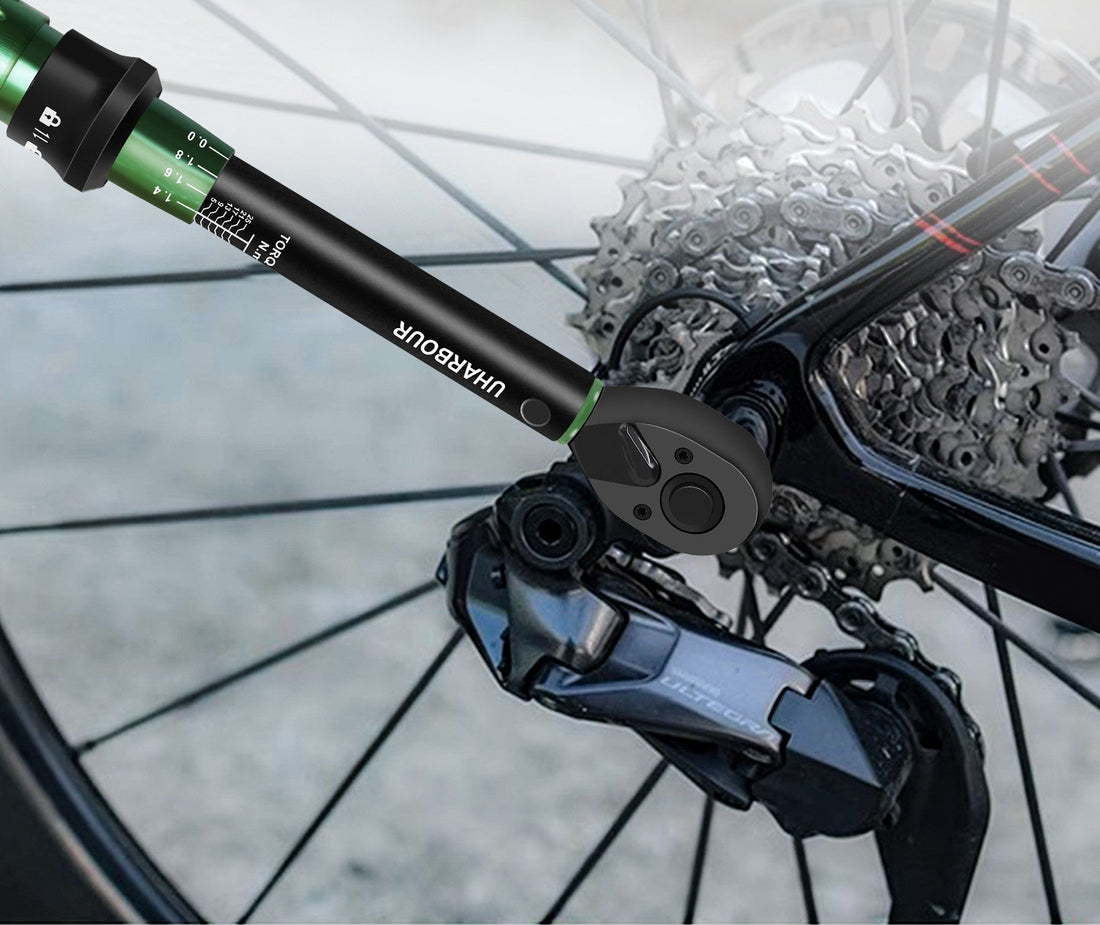
The Role of Torque in Bicycle Maintenance
Maintaining a bicycle is not just about cleaning and lubricating the chain—it also involves precise mechanical adjustments. Among the most important yet often overlooked factors is torque, the rotational force applied to bolts and components. Using the correct torque ensures safety, performance, and the longevity of bicycle parts.
Why Torque Matters
-
Safety First
Bicycle components such as handlebars, stems, seat posts, and brake calipers are held in place by bolts. If these bolts are under-tightened, parts can slip during a ride, potentially causing accidents. If they are over-tightened, bolts or delicate carbon components may crack. -
Component Longevity
Modern bicycles use lightweight materials such as carbon fiber and aluminum, which are strong but sensitive to excessive clamping force. Applying the correct torque helps prevent damage while maintaining structural integrity. -
Consistent Performance
Properly torqued parts function as designed. For example, a correctly tightened bottom bracket minimizes creaking, and evenly torqued brake components ensure reliable stopping power.
Common Bicycle Parts with Specified Torque Settings
- Handlebars and Stem Bolts: Typically 4–8 Nm
- Seat Post Clamp: 4–6 Nm
- Disc Brake Calipers: 6–8 Nm
- Chainring Bolts: 8–12 Nm
- Pedals: 35–40 Nm
These values vary by manufacturer, so always check the torque specifications provided by the bike maker or component brand.
The Torque Wrench: An Essential Tool
A torque wrench allows mechanics and cyclists to apply the correct force with precision. For bicycles, a torque wrench with a range of 3–25 Nm is most practical, covering most components. Digital torque wrenches provide audible or visual feedback, while mechanical click-type wrenches offer tactile confirmation.
Introducing the ultimate tool for precision and safety--Uharbour Bicycle Torque Wrench Set
This professional-grade torque wrench set offers adjustable torque from 3 to 25 Nm (26.6–221.3 in-lb), with fine tuning as precise as 0.2 Nm—perfect for bicycles, motorcycles, and more.
Precise & Safe: Ensures accurate tightening for reliable bike repairs without damaging components.
Dual-Direction Ratchet: Works both clockwise and counterclockwise for versatile use.
Quick Release Button: Easily swap bits for faster, smoother work.
Easy Adjustment: Slide the lock ring down, set your torque, and release to lock in place.
Comfort Grip: Matte handle with anti-slip strip for stable, comfortable control.
Complete Set: Includes hex and Torx bits plus an extension bar for all common bike repair tasks.
A must-have for cyclists who value precision, performance, and safety.
Practical Tips for Cyclists
- Always consult the component’s manual for torque specifications.
- Use a calibrated torque wrench for accuracy.
- Apply a small amount of carbon paste on carbon fiber contact surfaces to increase friction and reduce the torque needed.
- Periodically recheck torque, especially after transporting or assembling a bike.
Conclusion
Torque plays a critical role in bicycle maintenance by balancing safety, performance, and durability. Whether you are a casual rider or a competitive cyclist, investing in a reliable torque wrench and following proper torque specifications ensures your bike stays in peak condition for the road ahead.
